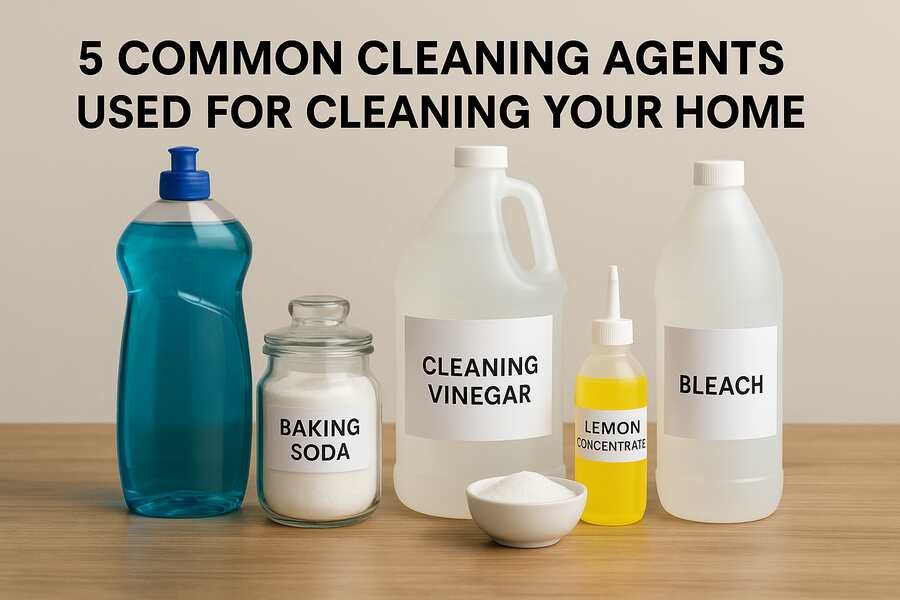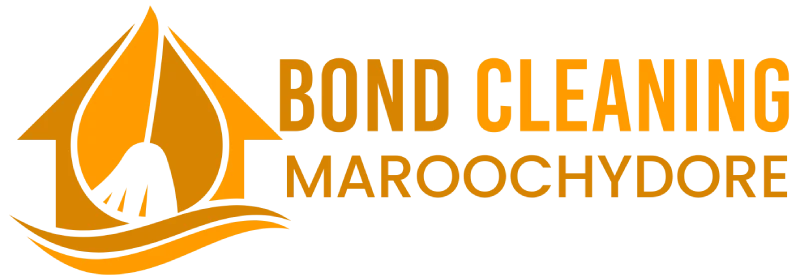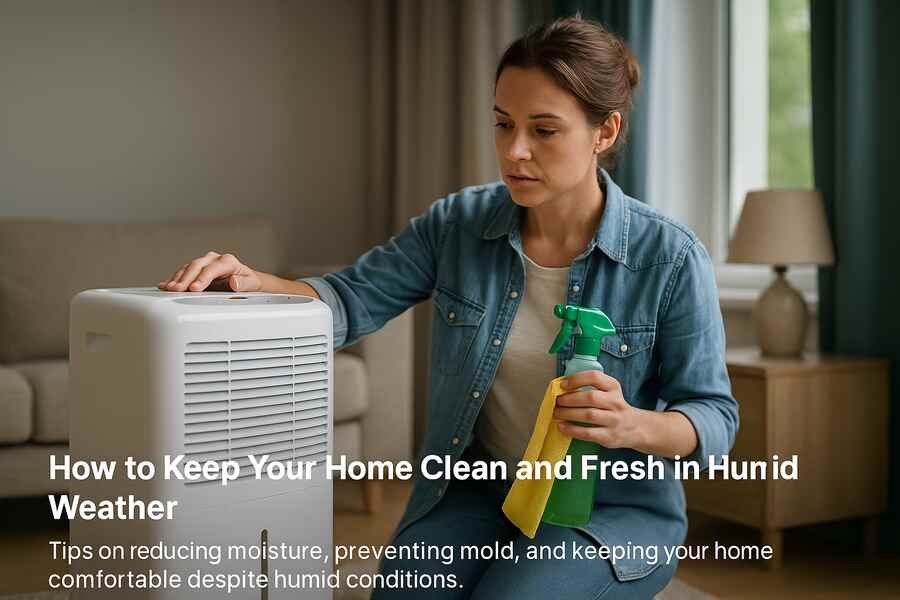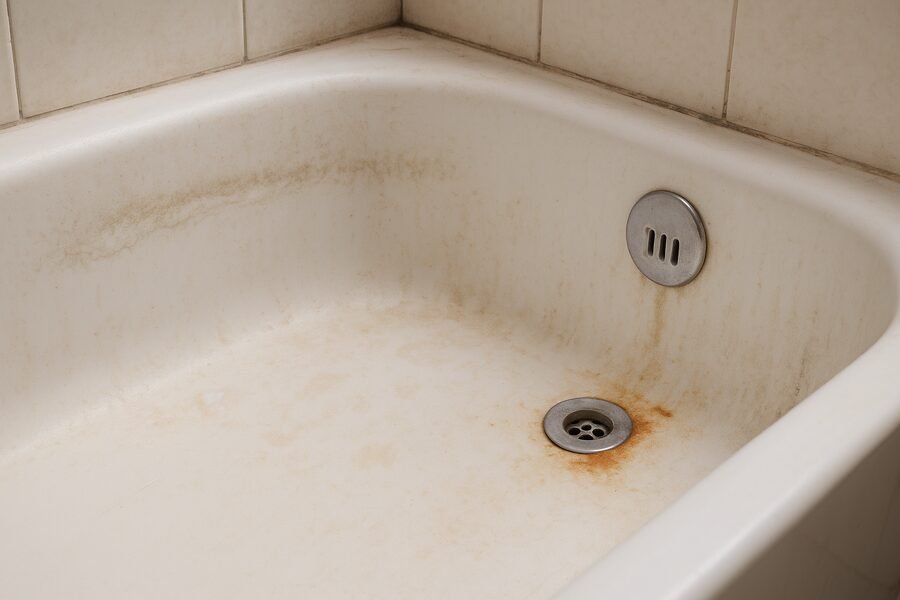5 Common Cleaning Agents Used For Cleaning Your Home

5 Common Cleaning Agents to Use Around the Home
How long has it been since you seriously considered what goes inside your cleaning cabinet? Is it because you just have to take that bottle, or do you know what it does and how it works? The problem-solving powers of cleaning products may be up your sleeves–it takes a little extra research, but your cleaning solutions just may spread their wings and fly.
We can take a practical, playful house tour and get a glimpse inside your cleaning equipment. This concerns not only sprays and scrubs, but also why they are so effective, which surfaces to use them on, and how to optimise them (without cluttering up your space with too many products). Therefore, fasten your sleeves, put on your gloves (or perhaps just activate your curiosity), and prepare to discover the five most-used cleaning agents lying in plain sight in your house.
How To Clean Your Home with Cleaning Agents?
When you cannot clean because of a lack of time, energy, or even commitment, do not hesitate to call the professionals to get house or Bond cleaning Marchydore services when needed. But you must know how to use everyday cleaning ingredients around the home to remain relatively clean. Therefore, five cleaning agents you can easily find at your house to professionally clean your house are listed here.
1. Use Dishwashing Liquid to Clean House
Dishwashing liquids are pH-neutral cleaners manufactured to wash away dirt, dust, grease and grime. Therefore, they can serve to clean up the dishes, oven, sink, stove, tiles and other kitchen items at your home. To remove grime, soak it in hot water to clean the dust and eliminate the stain. To boost the performance of the dishwashing liquid, you can mix it with organic disinfectants like baking soda, hydrogen peroxide, vinegar, etc. One can make many different DIY cleaners and much more. This way, always have dishwashing liquid at home (an evident, neutral smell is best).
2. Clean Dust, Dirt, Grime and odours with baking soda
Baking soda does not exclusively form part of the baking ingredients, but can disrupt the bonds of fats and proteins of food stains. It is reactive with rust, or iron oxides, by converting it to water-soluble salts. It can also absorb odours excessively on hard surfaces, such as upholstery, bedding, etc. The powder has fine particles that serve as mild abrasives. Hence, the powder helps clean and buff the surfaces. To clean practically anything using baking soda, knead an assortment of baking soda with water and a liquid soap. Or, wet a damp sponge, poke it directly into the powder, and scrub off stains, grime, scuff marks, etc.
3. Sanitise Surfaces/Fixtures within the House with Cleaning Vinegar
Cleaning the kitchen, bathroom, and other rooms in the house with white vinegar has been a practice that has been around since the olden days, as it was found to prevent bacterial growth. Therefore, when you want to clean and disinfect your home without using dangerous substances and want to get a result similar to that of household chemists, select cleaning vinegar.. It is more potent than natural cleaners such as white vinegar, as it is 20 % more active due to the 6% of acetic acid it contains. Make some all-purpose cleaners using water, vinegar, and dishwashing liquid to clean the house regularly. During bond cleaning, you may also have direct cleaning with vinegar to eliminate the stains caused by hard water, mineral deposits, mould spots, and other stains. Be warned: Do not use vinegar or acid cleaners on marble, granite or other natural materials.
4. Have Lemon Concentrate to Sanitise Your Home at Anytime
Lemon is a fabulous cleaner, deodoriser and grease remover due to the citric acid it contains. Additionally, most green end of lease cleaners wash houses with non-toxic, green and natural cleaners. Therefore, cleaning the kitchen and other household areas using lemons is efficient and effective. You may clean up stains, grime, and gunk off surfaces by scrubbing the stain out with a half-cut lemon to loosen and dissolve them. Also, prepare cleaning cubes for the garbage disposal by putting lemon wedges and vinegar in an ice cube tray in the freezer. Put these cubes in the disposal every few days to clean and eliminate odours. Note: lemon juice should not be used to clean natural stone surfaces as they have a high PH level and may result in irreversible losses.
5. Household Tip: Combating Grease & Oily Stains on Household Surfaces using Common Salt
Salt is a household commodity and, in most cases, forms part of food seasoning. However, besides acting as a condiment, salt can also be employed as a fabulous cleaning agent, which is slightly abrasive, grease-cutting, and does not affect the quality of air-conditioning at home. It can be diluted with lemon or used cleanly to clean sinks, microwaves, countertops, hobs and stoves, among other things. Stains on mugs, plates, bowls or pots can be removed by scrubbing with salt and all-purpose dish detergent and then washing. Salt is an efficient and effective oil-absorber that removes greasy or grimy spots. Cleaning coffee, tea, turmeric, and other edible objects works amazingly.
Wrapping Up
Cleaning and maintaining your house healthily is cost-effective and straightforward using the above five household cleaning agents. Now, apply the above insights to use them and save money. But, if you do not know how, find help cleaning houses or cleaning up your bond so that you are not the one left out trying to clean up your home and owe some of your bond back. Baking soda, vinegar, dish soap, bleach and hydrogen peroxide are strong, multifunctional cleaners. Their safe usage decreases your whole house’s chemicals, freshness and shininess. And the next time you dust, check beyond the tag–these line of duty heroes in their uniforms operate like little work horses, tremendously underestimated, or loyally keeping your house clean, odour-free and wholesome.



